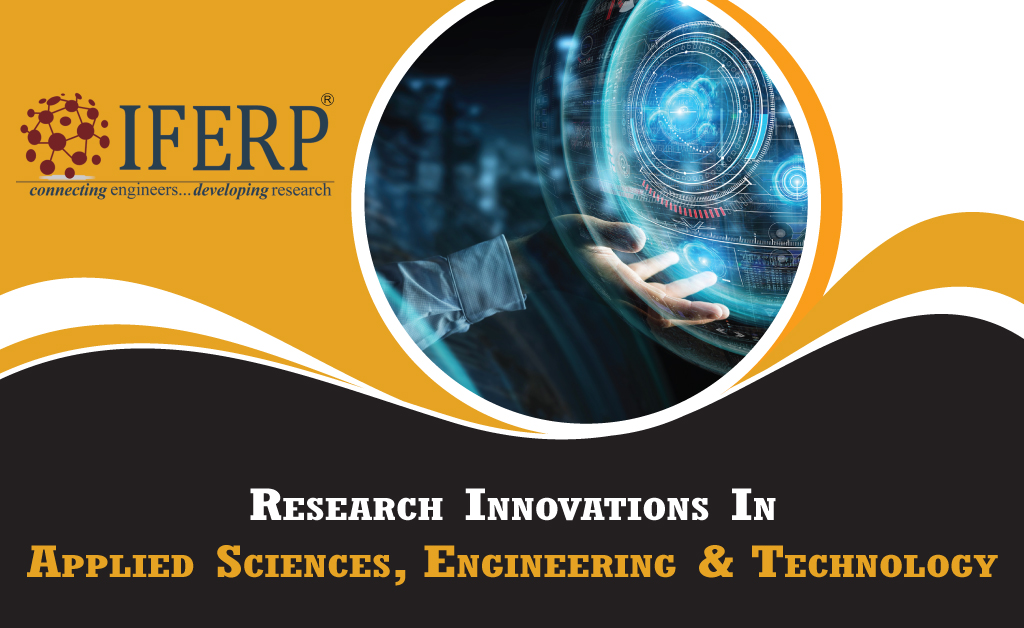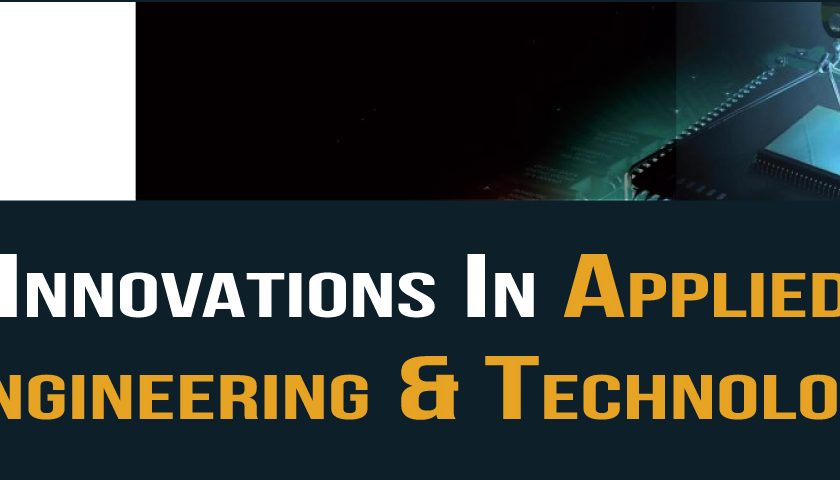On close observation of a large company today, it’s impossible to miss the positive impact of collaboration. Advances in technology and international travel have provided businesses with access to new ideas and perspectives. Bringing together people from diverse, often cross-border backgrounds has led to new ways of thinking, better solutions, and faster progress. The same is true in science.
When one thinks of some of the greatest accomplishments of the past century, they are often the result of numerous scientists working together across the world. Collaboration and international mobility strengthen science. Countries with a mobile science workforce produce more frequently cited papers.
Researchers working in more than one country have a forty percent higher average citation rate, while internationally collaborating articles have a greater impact than national articles. Detailed below are some of the biggest recent advancements in the fields of the applied sciences, engineering, and technology.
- 3D Metallic Printing
We’ve all gotten used to plastic 3D printing in recent years and the ease it has brought to design and prototyping. Advances in technology mean that instant metal fabrication is quickly becoming a reality, clearly opening up a whole new world of possibilities.
The ability to create large, complex metal structures on demand could revolutionize manufacturing. Metal 3D printing gives manufacturers the ability to manufacture a single or a small number of metal parts at a much lower price than using existing mass-production techniques. Instead of maintaining a massive inventory of parts, the company can just print a part when the customer needs it. Moreover, it can make complex shapes impossible with any other method. This can mean lighter or better performing parts.
- Artificial Embryos
Researchers have made a major breakthrough by fabricating embryo-like structures from stem cells alone, without using eggs or sperm. This will open up new possibilities for understanding how life is born – but also clearly raises vital ethical and even philosophical issues. Artificial embryos could offer an invaluable scientific tool for comprehending how life forms. However, they could eventually make it possible to create life simply from a stem cell taken from another embryo without sperm or eggs.
It would be an artificial creation of life placed in the hands of laboratory researchers. The 2023 Conference in Philippines titled ‘33rd World Conference on Applied Science, Engineering and Technology (WCASET 2021)’, which is set to take place from the 26th to the 27th of February 2021 in beautiful Manila, Philippines, is a must-attend event for anyone looking to gain more information on this groundbreaking development in biomedical engineering and medical science.

- Sensor Civilization
In Toronto’s Waterfront neighborhood, Google’s parent company Alphabet is implementing sensors and analytics to rethink the way cities are built, managed, and lived. The objective is to combine urban design with cutting-edge technology in order to create smart cities that are more affordable, livable, and environmentally sustainable. While it won’t be over for a few years, it could be the start of cleaner, safer smart cities.
- Cloud-based AI services
Major players here include Amazon, Google, IBM, and Microsoft, all of whom are working to extend access to machine learning and artificial neural network technology to make it more affordable and easy to use. The availability of AI tools in the cloud means that advanced machine learning is widely available to many different companies. It will change everything from manufacturing to logistics, making AI much cheaper and easier for businesses to deploy.
- Neural Networks Debating Each Other
This breakthrough promises to give AI systems an imagination, essentially allowing them to argue with each other. Work at Google Brain, Deep Mind, and Nvidia focuses on activating systems that will create ultra-realistic, computer-generated illustrations or audio waves beyond what is currently possible. Dueling neural networks describes a breakthrough in artificial intelligence that enables AI to create images of things it has never seen. It gives AI a sense of imagination. However, it also calls for caution, as this raises the possibility that computers will become alarming tools for digital forgery and fraud.
- Language Translating Earphones
Named after the sci-fi comedy concept introduced by Douglas Adams in The Hitchhiker’s Guide To The Galaxy, these headphones use instant online translation technology, allowing humans to understand each other while communicating in different languages in real-time. Google’s Pixel Buds make it easy for users to have a natural conversation with someone who speaks a different language. While the headphones themselves are still at an early stage and, it seems, are not yet performing very well, anyone can access the underlying technology today through on-command translation services.
Want to know more about how these earphones work? Then, register yourself for the upcoming conference 2023 titled the ‘33rd World Conference on Applied Science, Engineering and Technology (WCASET 2021)’, which is going to take place in Manila, Philippines, later this month.
- Carbon-Free Natural Gas
New engineering methods make it possible to capture the carbon released during the combustion of natural gas, avoiding greenhouse gas emissions and opening up new possibilities for the creation of clean energy. Currently, 32% of the electricity used in the United States is produced by burning natural gas – a process that accounts for about 30% of carbon emissions from the electricity sector. Rivers Capital, Exelon Generation, and CB&I are key players in this arena. Clean natural gas technology holds the promise of producing electricity from cheap and readily available fossil fuels in a way that does not generate carbon emissions.
- Perfect Online Privacy
Blockchain-based privacy systems make it possible to record and validate digital transactions while protecting the privacy of the information and identities underlying the information exchange. This means that it’s easier to disclose information without risking privacy or exposure to threats such as fraud or identity theft.
- Predictive Genetics
Huge advances are being made in predictive analytics using genomic data by companies such as Helix, 23andMe, Myriad Genetics, BK Biobank, and the Broad Institute. This helps to predict the chances of diseases such as cancer, or even IQ, by analyzing genetic data.
This promises to be the next leap forward in protecting public health but also raises huge ethical concerns, including the risk of genetic discrimination. Nothing like this was possible before. Genetic divination will predict the odds that you are intelligent or below average in intelligence. It will also predict behavioral traits. Register Philippines conference – WCASET 2021, to learn more about developments in predictive genetics and where the field is heading.
- Quantum Leap Of Materials
Using an IBM-designed seven-qubit quantum computer, Harvard researchers have created the most comprehensive simulation of a single molecule. The molecule – beryllium hydride – is the largest ever simulated by quantum computing. The promise is that scientists could use quantum computers to design new types of materials and precisely tailor their properties. It could make it possible to design all kinds of miracle materials, such as more efficient solar cells, better catalysts for making clean fuels, and proteins that act as much more efficient drugs.
- Mega-Constellations By Satellite
The impetus behind the satellite mega-constellations is the goal of providing high-speed Internet access to every corner of the planet. Mega-constellations of satellites are the solution to banishing irregular Wi-Fi signals and cellular connections.
While allowing global connectivity for almost everyone on the planet, these mega-constellations of satellites will also invade space and dramatically increase the number of orbiting satellites quite rapidly. In the absence of internationally instituted and recognized guidelines, the operation of industry leaders such as SpaceX, OneWeb, Amazon, and Telesat, this technological breakthrough could lead to chaos.
- Miniature AI
It is now feasible for efficacious AI and machine learning algorithms to operate from smartphones and other cellular devices without having to communicate with the cloud. With miniature AI algorithms, researchers are sizing down existing AI models through a process popularly known as “knowledge distillation” without dissipating any of the original algorithm’s capacities or pace of execution. The advantages of gaining access to AI algorithms from our devices include not encountering latency as there is no interaction with the cloud, and there are fewer privacy matters. Everybody from Google and IBM to Apple and Amazon is at making massive progress using this technology. WCASET 2021, which is a highly anticipated engineering and technology conference 2021, set to take place in Manila, Philippines, later this month, will offer participants detailed insight into the phenomenon of miniature AI.
- Healthcare & AI
In a nod to the power of collaboration between humans and machines, scientists are using AI to discover molecules that can have an incredible impact on healthcare. Recently, machine learning has been used to identify a powerful new type of antibiotic. Artificial intelligence has been used to identify a whole new type of antibiotic from scratch. It is extremely expensive to develop a new drug, in part because it is difficult to identify molecules. With AI at work, millions of molecules can be assessed quickly and efficiently.
- Quantum Supremacy
Although we are probably five to ten years away from achieving quantum supremacy, when a quantum computer can outperform a conventional computer, Google has claimed to have already taken that step with its Sycamore quantum processor. Sycamore was able to determine a set of randomly distributed numbers in three minutes and twenty seconds (the company estimated that it would take a typical computer ten thousand years to complete the task). While this achievement was impressive, they recognized that we are years (if not decades) away from a quantum computer capable of solving the problems we want to solve, problems that classical computers cannot handle.
- Breakthroughs In Climate Change
Owing to improvements in computer processing power, scientists are now able to attribute the role of climate change in severe weather events. This knowledge helps tremendously in understanding how to prepare for future events and provides evidence to hold governments or businesses accountable for damage caused by severe weather events caused by climate change. The attribution of climate change informs the conversation and climate disputes that are becoming more and more prevalent as climate change causes weather events that result in the loss of property and lives.
- Anti-Aging Drugs
While the fountain of youth may still elude us, we are getting closer to bringing anti-aging drugs to market. Many different diseases, such as cancer, dementia, and heart disease, could be improved or prevented if we could slow down the aging process. These drugs are said to target a natural aging process in the body. There has already been some success with these drugs in human testing. The upcoming Philippines conference, WCASET 2021, will delve into detail about anti-aging drugs, how they were discovered, and how they are being developed.
- Unhackable & Impenetrable Networks
As recent press reports reveal, the internet being used today is vulnerable to hackers. There are people who are working on the creation of the first quantum internet, which would be completely safe from hackers. The Delft University of Technology, which is expected to complete a quantum internet between Delft and The Hague, is one of the organizations working to create a non-hackable internet. The basis of a quantum internet, entanglement, provides security – it is physically impossible to eavesdrop when two users are on an entangled network.
- Differential Confidentiality
Differential privacy makes it feasible for organizations to be able to collect and share aggregated user information from submitted or collected data while maintaining the confidentiality of individuals’ identities. The goal is to maximize the use of data without compromising the privacy of the individual. With differential confidentiality, raw data is not accessible to data scientists or database managers. Differential privacy gives businesses a way to solve the privacy problem and build trust.
Eager to participate in IFERP Conferences? Then, save your seat at one of its biggest upcoming events in the recent past – WCASET 2021, now!


